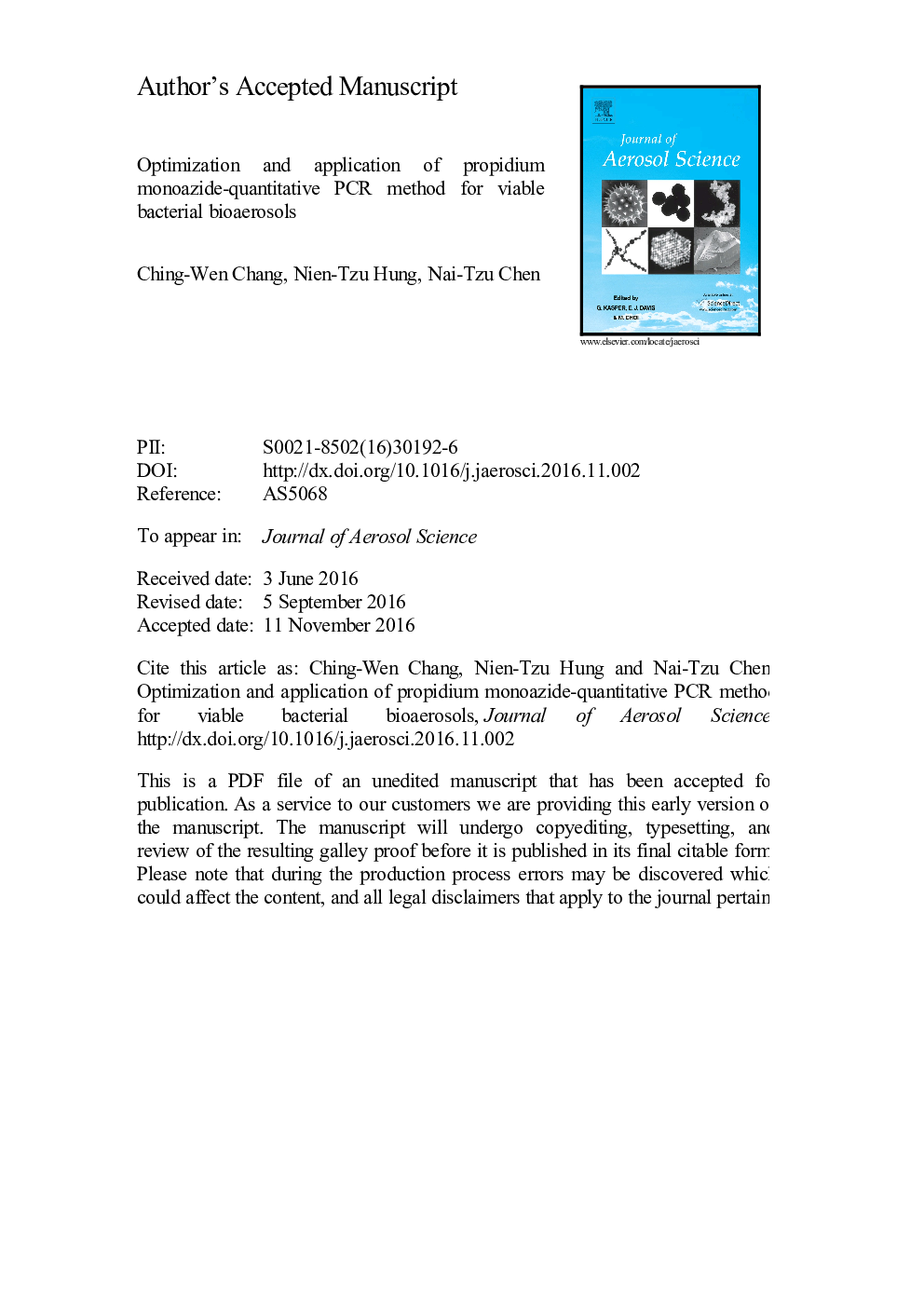| Article ID | Journal | Published Year | Pages | File Type |
|---|---|---|---|---|
| 5753893 | Journal of Aerosol Science | 2017 | 24 Pages |
Abstract
Viable bacterial bioaerosols cause infections, inflammation and allergic responses in humans and require analytical techniques for exposure assessment. Conventional culture assays often underestimate bioaerosol burdens. This study assessed quantitative PCR (qPCR)-based method considering the effects of DNA dyes (propidium monoazide (PMA) and ethidium monoazide (EMA)), cell densities and dead cells. By testing PMA and EMA at 0.2-46 μg/mL with cultivated air samples, qPCR with PMA of 1.5 μg/mL was revealed optimal for exclusively quantifying total counts of viable bacteria with a great linearity (r=0.99) over 7 orders of magnitude (4-10 log CFU/mL) and no interference by heat-inactivated cells (8 log CFU/mL). Resulting gene copies were properly transformed to bacterial numbers by constructed calibration curves (R2=0.96-0.97). Total, viable and culturable bacteria in the air of various indoor and outdoor environments were further quantified and a descending order of total counts>viable counts>culturable counts was observed regardless of sampling location, highlighting the applicability of PMA-qPCR in field aerobiology. Besides, by respectively dividing the concentration of viable and culturable cells by that of total cells, there were 13.7-71.7% of airborne bacteria detected viable compared to 0.3-1.2% of cells as culturable, illustrating high quantities of viable but not culturable bacteria in field air.
Related Topics
Physical Sciences and Engineering
Earth and Planetary Sciences
Atmospheric Science
Authors
Ching-Wen Chang, Nien-Tzu Hung, Nai-Tzu Chen,
